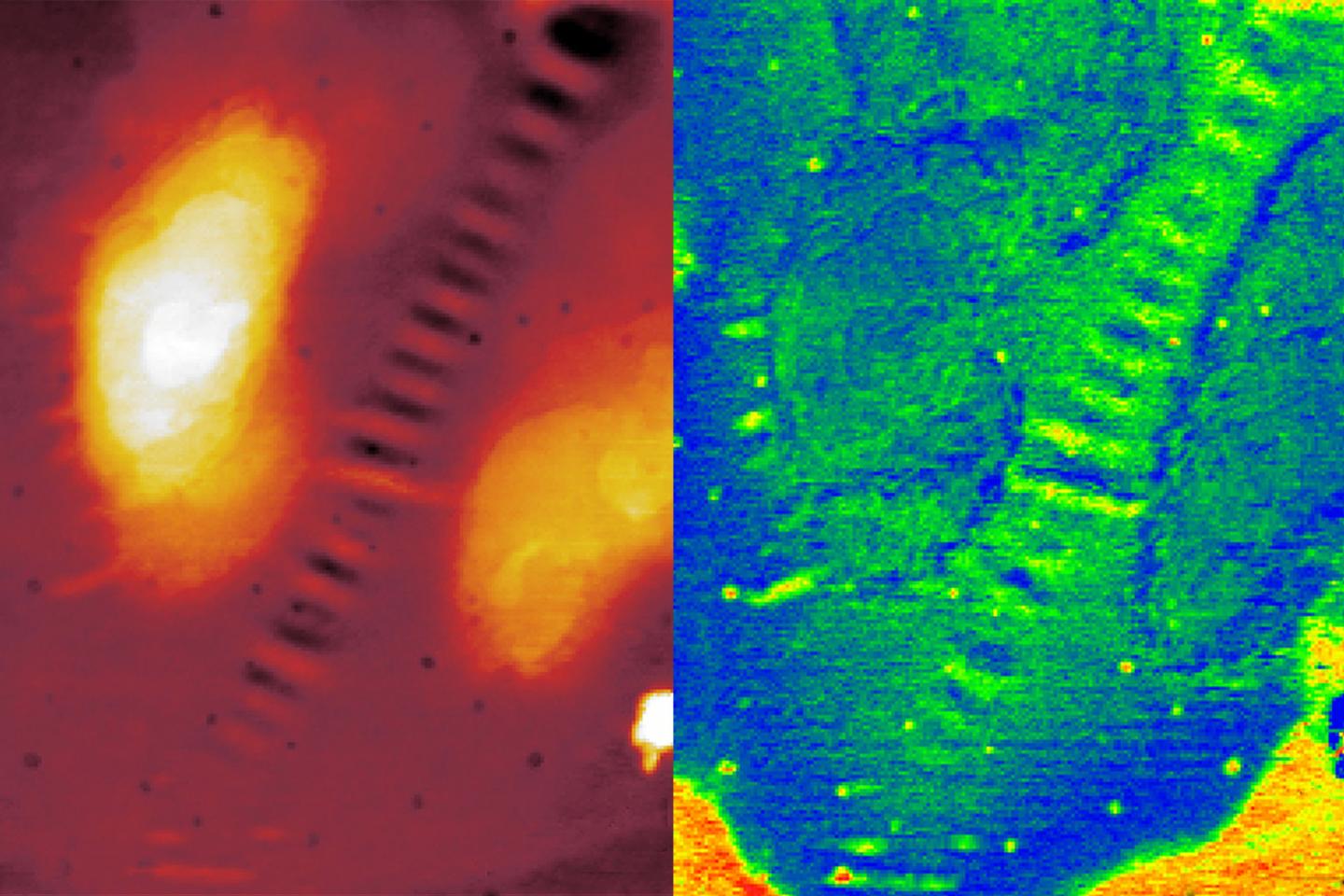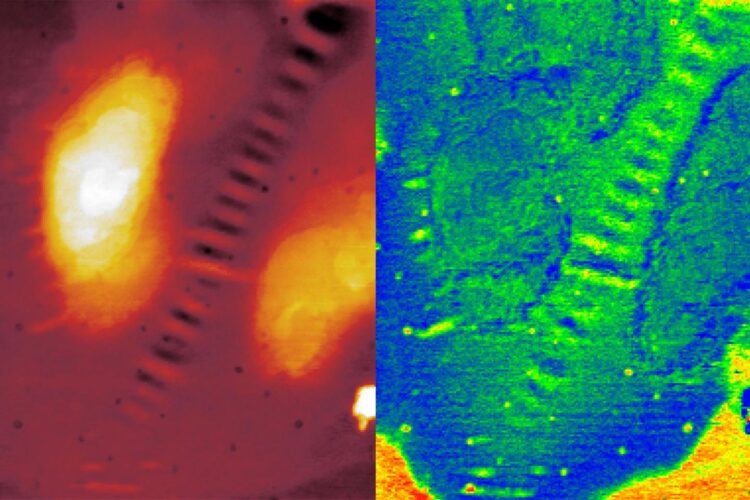Bitumen surfaces under the microscope

Credit: TU Wien
While atomic force microscopy and scanning electron microscopy have already provided information on the morphology of bitumen surfaces in the past, for a long time it was not known whether surface and chemical composition correlate with each other. However, the chemical composition of the surface is of particular interest because oxidation processes take place there, triggered by oxygen-containing molecules in the air such as ozone, nitrogen oxides or hydroxyl radicals. The oxidation process accelerates the aging of the material – the bitumen becomes porous and damage develops.
The materials chemists Dr. Ayse Koyun and Prof. Hinrich Grothe from TU Wien therefore examined the bitumen surface using various physicochemical analysis methods and compared the respective results with each other. The researchers published the data on June 29 in the journal Scientific Reports.
A diverse material
Bitumen is produced from petroleum and primarily used for the production of asphalt. Its consistency depends largely on temperature – at hot temperatures it is viscous and larger chemical compounds such as aliphatics, petroleum resins and asphaltenes move freely in the mass. When the bitumen cools, however, the material solidifies and the individual molecules arrange themselves in characteristic patterns. Analyses have already shown that so-called core-shell particles form on the surface. These are composites that consist of at least two different components.
Since asphalt and bitumen are used for road construction as well as for waterproofing work, the longest possible product lifetime is desirable. To slow down the aging of the material, reactions triggered by reactive gases, light and heat must be minimized. ” Once we understand the oxidation behavior of bitumen better, we can look for appropriate measures to prevent atmospheric aging. This can extend the lifespan of a bitumen product by many years, saving energy and material resources,” Koyun explains. In a study published in Colloids and Surfaces A: Physicochemical and Engineering Aspects, she has already been able to show how the chemical composition of bitumen affects its aging process.
Mix of methods provides new info
In close collaboration with Harvard University, Bruker Nano-Surfaces Division as well as IONTOF GmbH, Ayse Koyun, first author of the study, investigated the bitumen surface using three different methods: nanoscale infrared spectroscopy based on photothermal expansion (AFM-IR), time-of-flight secondary ion mass spectrometry (ToF-SIMS) and fluorescence microscopy. In combination, these methods provide valuable insights into the multiphase nature of the bitumen surface. “The resolution of conventional measurement methods used to study surface composition is too low for chemical characterization. Individual domains of the surface cannot be determined in this way,” Koyun explains. “However, by combining different physicochemical methods, we succeed in mapping the structure down to ten nanometers.” The result: the surface is heterogeneous. The findings of microscopic and spectroscopic methods correlate and can be interpreted conclusively.
A complete picture is created
“For a long time, bitumen was like an unsolved puzzle for us materials chemists,” says Hinrich Grothe, head of the Physical Chemistry of the Atmosphere research group. “We know many details, but until now it has not been possible to piece them together into a complete picture. However, the combination of several physicochemical methods, as we applied them, was finally able to show us how the individual molecular assemblies are distributed in the bitumen.” ” This allowed us to solve the puzzle and complete our knowledge of bitumen,” adds Ayse Koyun, who is completing two research stays at Harvard University as part of a Marshall Scholarship and with support from the TU Wien.
###
Contact
Dr. Ayse N. Koyun
Institut für Materialchemie
Technische Universität Wien
+43 1 58801 165123
[email protected]
Univ.Prof. Hinrich Grothe
Institut für Materialchemie
Technische Universität Wien
+43 1 58801 165122
[email protected]
Media Contact
Sarah Link
[email protected]
Original Source
https:/
Related Journal Article
http://dx.





